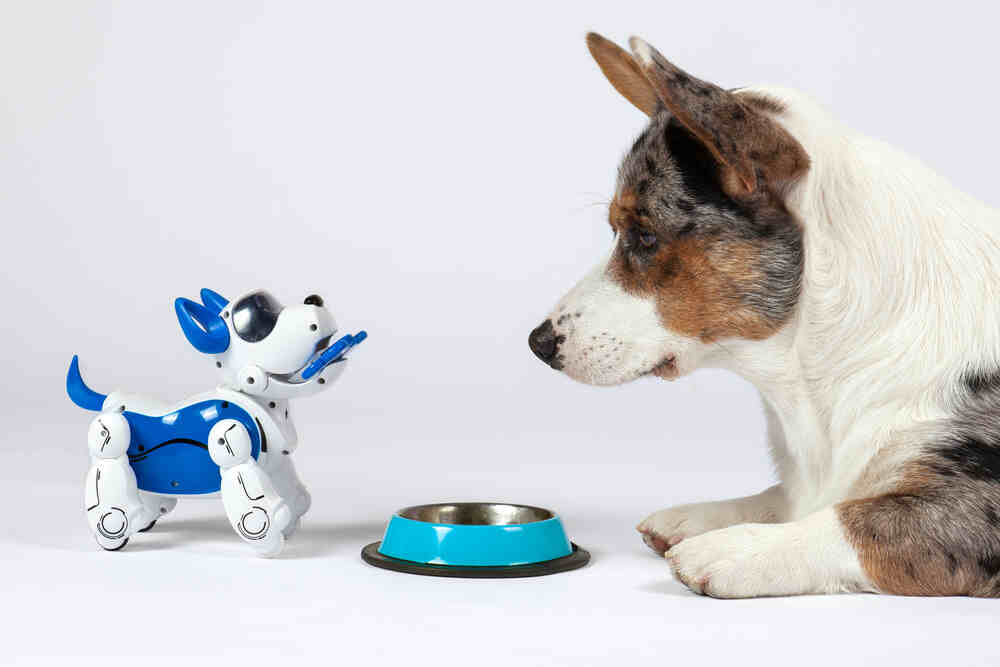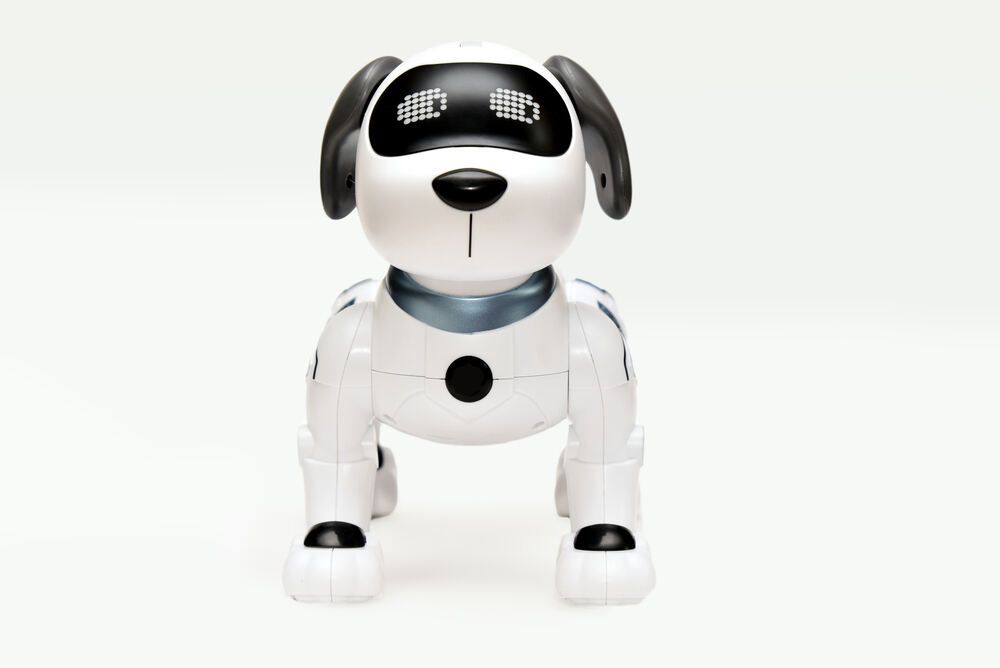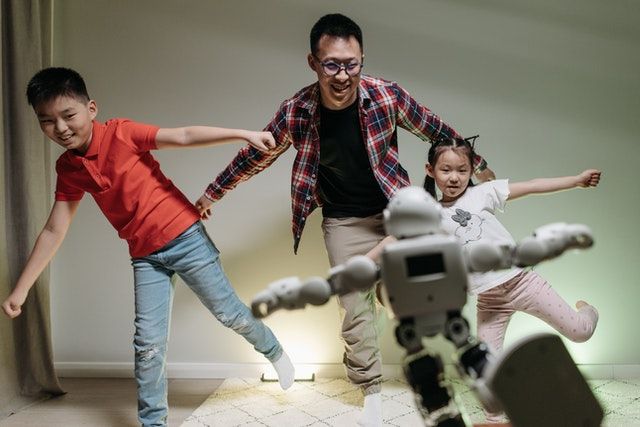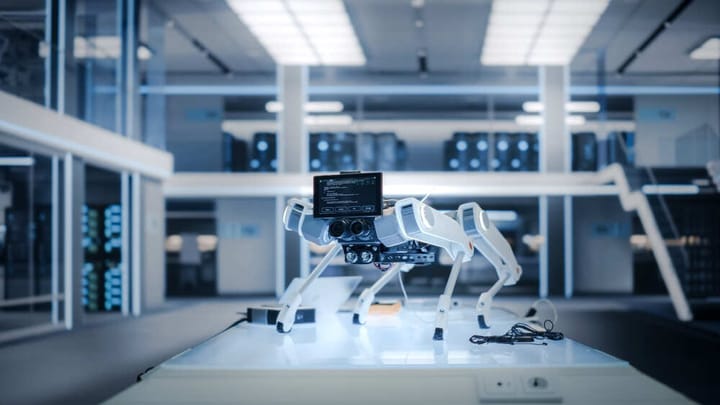Robot Dog Toys are Getting Famous - But Are They Worth It?
Robot dogs have been a thing for a while now, but people are still debating the benefits and drawbacks of robot dog vs. real dog. This article will help us determine which type of dog is better - or at least the best use of each might.

Robotics has already been shown to be a technological breakthrough in various fields, from manufacturing to customer service. Spot is a Boston Dynamics robot dog that has been used as a mobile camera, and his work has sparked debate about potential future uses for robots.
A puppy adoption involves much responsibility. A puppy's mental requirements must also be met in addition to its physical demands, and this duty can be too much for people who are young or old. The role of a dog robot toy is now clear. The robotic dogs will interact with you much like a typical puppy, as the name would imply. These are not real dogs, but you get the idea. Thanks to technological improvements, the realism provided by these robot pets have greatly increased. Because of these technological advancements, the market has become oversaturated because every brand is creating its own version of robotic dogs.
Nobody could have envisaged robotic animals twenty years ago. However, there are now several different robot dog models on the market, not just one. You might mistakenly believe you are engaging with a live dog because some robot dogs are so lifelike. There are various types available if you are looking for the greatest robot dogs. Some are intended for projects or experiments, while others are toys. People are becoming more interested in robot dogs these days. Some people choose robotic pets over genuine dogs as pets. See the contrast below before deciding between a robotic and a real dog.
What Exactly is a Realistic Robot Pet?
Robotic pets are stuffed animals with sensors that react to touch and movement. These artificial animals can blink, move their lips and head, and make genuine sounds, but they are not toys for kids; rather, they are created to give their "owners" a profound sense of comfort. Robotic therapy animals are being developed by companies like Tombot, AIBO robot dog, and PARO to keep elderly patients in hospitals and nursing homes quiet and interested.
Real Dogs Vs. Robot Dogs: Pros and Cons
Before making your decision, you must understand the benefits and drawbacks of owning either a live dog or a robot dog. It's important to weigh the pros and drawbacks of having a robot dog vs real dog when making decisions.
Benefits and Drawbacks of Realistic Robotic Pets
Robotic dogs, like the Petoi Bittle robot dog, are becoming very well-liked. It is a result of its various benefits. A robot dog is simple to care for. It's not like a dog and doesn't need to be fed and groomed all the time. You will see how robot canines compare to actual dog breeds and why it is the best option for people with allergies. Some individuals cannot own dogs due to allergies. In that case, you could decide to buy a robot dog.
Realistic robotic dogs can be a perfect solution for people concerned about losing their dogs. A robot dog may be a wonderful solution for people who are deeply connected to their pets and don't want to experience the heartache of losing them.
The Real Robot Dog Toy doesn't need to be fed or taken care of by you. You need to charge your robot dog before you can play with it. If you're searching for a dog that can be trained to behave like a real dog, Petoi Bittle Robot Dog is a fantastic option. It is a little robot canine that mimics several characteristics of a real dog. It is also incredibly cost-effective. It is simpler to transport robot dogs. Robot dogs are portable, even in locations where animals are not allowed.
Pros and Cons
Pros
- Compared to other toys, robot dog toys are unquestionably more engaging.
- Pet dander is absent from them.
- The realistic robot dog with fur can express various emotions, including rage, disgust, joy, grief, love, and surprise.
- Robotic dogs move towards the charging area of their own volition when their batteries run low or at your order.
- You are not responsible for cleaning up their messes or excrement.
- Basic behaviors can be taught to robot dogs.
- Like genuine dogs, they can mimic real connections.
- They have touch-sensitive regions that can be used to initiate touch interaction.
- Robot puppies that look real are both quite amusing and appropriate.
- Because a robot dog does not pass away like a real dog, you won't feel the anguish of loss.
- There is no need to spend money on dog treats and food.
Cons
- Real emotions are not evident in robot dogs.
- They are pricey to purchase and keep up.
- Robotic dogs that look real are not real in actual, they are unable to express living-like feelings.
- Robotic dogs are more toys than actual canines.
- Limited engagement because "awake" times are typically longer than charging times.
- The joy of buying dog food and treats and feeding a real dog is taken away from you.
- Robot dogs are awkward and have a robotic appearance and feel.
- They react slowly and reflexively to your commands.

Benefits and Drawbacks of Real Dogs
Technology cannot replace our animal buddies fully. Owning a genuine dog is the greatest delight. Robotic dogs may be able to communicate, but they cannot provide the affection and moist licks that a genuine dog can. Real dogs aren't for everyone, however. When you have a dog, you are responsible for many things. Your care will be needed to maintain your dog's health and happiness, including grooming, feeding, and routine veterinary trips. Sadly, not everyone has the time.
Only get a genuine pet dog if your household has the time and resources to care for one. If you want a dog who likes playing and having fun, a robot dog can be your ideal option. The love and devotion genuine robot dogs show you is their finest quality. Man's best friend, so the saying goes, is a dog. Each one has benefits and drawbacks of its own.
Pros
- Real pets make their owners genuinely happy.
- They are still living and offer people much comfort.
- As young puppies, they are interesting and difficult to teach.
- Real dogs make the best companions.
- Real dogs can protect the human family.
- They make excellent playmates for your kids.
- They are devoted to their human parents and possess genuine feelings.
- Real dogs can discern their owners' feelings.
- They show loyalty and love without conditions.
Cons
- The cost of keeping real pets is high (food, vet, grooming).
- They cause more damage to a home than an untrained dog would, such as peeing on the furniture, damaging your flooring, and destroying your shoes.
- To bring them on vacation requires much preparation.
- They shed their fur and have dandruff.
- Real dogs may become ill and pass away.

How To Determine Whether to Own a Real Dog or AI Dog Robot?
Now that you know the facts comparing actual and robot dogs, it is time to consider a few variables that may influence your choice.
Preference
Which kind of dog do you personally want? Do you want to try out new technology and own a robot dog, or are you a lifelong dog lover who likes to keep your pet alive and well?
Money
The cost will play a significant role in your selection. A robot dog is highly expensive, and you will need to set aside money for upkeep in the future. On the other hand, depending on the breed, a genuine dog can also be pricey, but nothing comes close to the enormous cost of a robot dog. An actual dog would require feeding, grooming, and frequent trips to the vet, all of which may be costly.
Need
Which breed of dog do you require? What type of way of life do you lead? Your decision to buy a live dog or a robot dog must consider your needs. Invest in a real dog if you want your pet to comfort you and show devotion and affection. However, you may buy a robot dog if your job and lifestyle prevent you from having the time to care for a real dog.
However, you may buy a robot dog if your job and lifestyle prevent you from having the time to care for a real dog. You can be flexible with your schedule if you have a robot pet. Because you don't have an actual dog to feed, you don't have to worry about going out all day and night or being gone for days. However, you may get a robot dog for your kids to train if you want them to have much fun with an interactive dog. However, a genuine dog is preferable for you if you want your family to experience true happiness and delight, with barking, wagging tails, and occasional headaches.

The Choice
Whether you like it or not, this world contains real dogs and robots. If you're having trouble deciding which dog to have, consider what would be ideal for you and your family. You can step outside your comfort zone by having a robot dog or sticking with tradition and getting a genuine dog. However, if you give it some thought, you don't have to pick between the two. Having both allows you to benefit from the best of both worlds.
Purchase a live puppy and a robot dog to train simultaneously and allow them to live with you as regular pets.
Benefits of Robotic Pets as Companions
Having one of these adorable creatures as a pet has many advantages beyond just easing loneliness and anxiety, especially for those with dementia and Alzheimer's.
1. Robotic Pet Dog is Easy to Maintain
Robotic Companion Pets are advantageous for various reasons but are also quite simple to maintain. All they require is love and batteries. Imagine a world without litter boxes, cleaning up after pets, training, or worrying about who will watch them when a vacation is required!
2. Reduced Obligations
There is no requirement to keep the water and food bowls filled up as there would be with a real pet. Even better, there aren't any teary eyes begging for food from the dinner plate.
There are no after-dinner walks since there is no need to feed the real-life robotic pets. Another advantage is having a house free of the smells caused by certain body processes. Live animals, particularly dogs, become filthy, develop odors, and require bathing. However, none of these is necessary for a robotic pet.
3. Robotic Pets for Elderly Alleviates Social Isolation and Loneliness
It is not breaking news that certain members of the elderly and at-risk population are struggling in these Covid-19 times since they have not been in contact with others for extended periods. Naturally, we would like to be present to support and interact with our loved ones, but if this is not feasible, lifelike dogs for seniors may help those who are lonely by acting as reassuring friend that reacts to touch and motion. Robotic cats can also purr, a peaceful and soothing sound that helps people feel less lonely. An early pilot study in New York found that older persons' feelings of loneliness drastically decreased by 70% after one year. According to research, the advent of robotic companion animals enhances older individuals' quality of life by reducing their risk of depression and social isolation. Are robot dogs real companion? Key discoveries have revealed:
- Robotic buddy cats improve dementia patients' quality of life and overall well-being.
- Robotic dogs boosted the meaning of life for patients and their loved ones by significantly reducing agitation and social isolation in those who received them.
- Robotic animals might be a workable solution to behavioral issues in patients with ICU conditions.
4. Cognitive Function
Robotic Companion Pets, which are entertaining and comforting, have been shown to improve brain activity and are now being used to aid patients with various diseases, such as dementia and Alzheimer's, as well as autism in certain youngsters. They are a fantastic substitute for therapy animals, which cost much money, time, and care to maintain.
Robotic dogs for seniors have been proven to reduce tension and anxiety in dementia patients, leading to a decrease in psychotropic drugs and painkillers, according to 2016 research published in the Journal of Alzheimer's Disease.
5. In The Long Run, Cost Less
The cost of a robotic pet will vary, just like the cost of a real pet, depending on the animal's breed, lineage, and target market. However, since just batteries or energy for recharge will need to be bought in the future, robotic pets will be less expensive in the long term as most costs will be covered in the first purchase. Robotic pets for seniors help them save money since its owner will need to keep spending money on food, toys, and medical care.
6. Robotic Therapy Dog
Robotic pets have a comparable therapeutic impact on animals because of their sophisticated capabilities. A live animal is used in animal therapy to foster the human-animal relationship, which enhances the patients' health. For instance, research presented at the Scientific Sessions of the American Heart Association shows that animal-assisted treatment can improve the health of the heart and lungs by reducing patient anxiety and blood pressure. The same study also revealed that 12 minutes of dog time had good health effects. Another research by Nancy Richeson showed that animal-assisted therapy helped older persons with dementia greatly reduce aggressive behaviors and significantly boost social contact.
7. Robotic Pets Are Practical
Robotic dogs are just as helpful in preventing loneliness, especially among seniors, according to certain studies. Owners of robotic pets have complete control over their animals and can start play and attention sessions because a robotic pet can be switched off. Another factor to consider is the absence of support necessary when an owner vacates or vacations.
8. Live Pets Can't Do Things That Robotic Pets Can
Robots are programmed to carry out specific tasks, such as communicating with the owner. Some very sophisticated robotic pets are trainable by the owner. A behavioral option for the robotic pet enables an owner always to have a puppy if they like a pet that has the thrill of a new puppy.
9. Fantastic For Kids
Robotic Companion Pets were designed to help patients with dementia and Alzheimer's, but they have also proven extremely popular with kids, particularly those with autism. They are engaging and relaxing.
Take Away
A comparison between a real dog with a realistic robot dog can demonstrate that each has benefits and disadvantages of its own. Robot dogs are undoubtedly more inventive and sophisticated technologically. Robotic dogs are extremely advanced technical devices. Dogs are formed of bones and flesh. In contrast to real dogs, AI robot dogs can interact, enjoy themselves, learn, and study. Robot dogs make wonderful pets for those who cannot care for their pets. They are not required to get a dog and can buy a Robo pet instead. If your schedule permits it, you can have a devoted pet.



